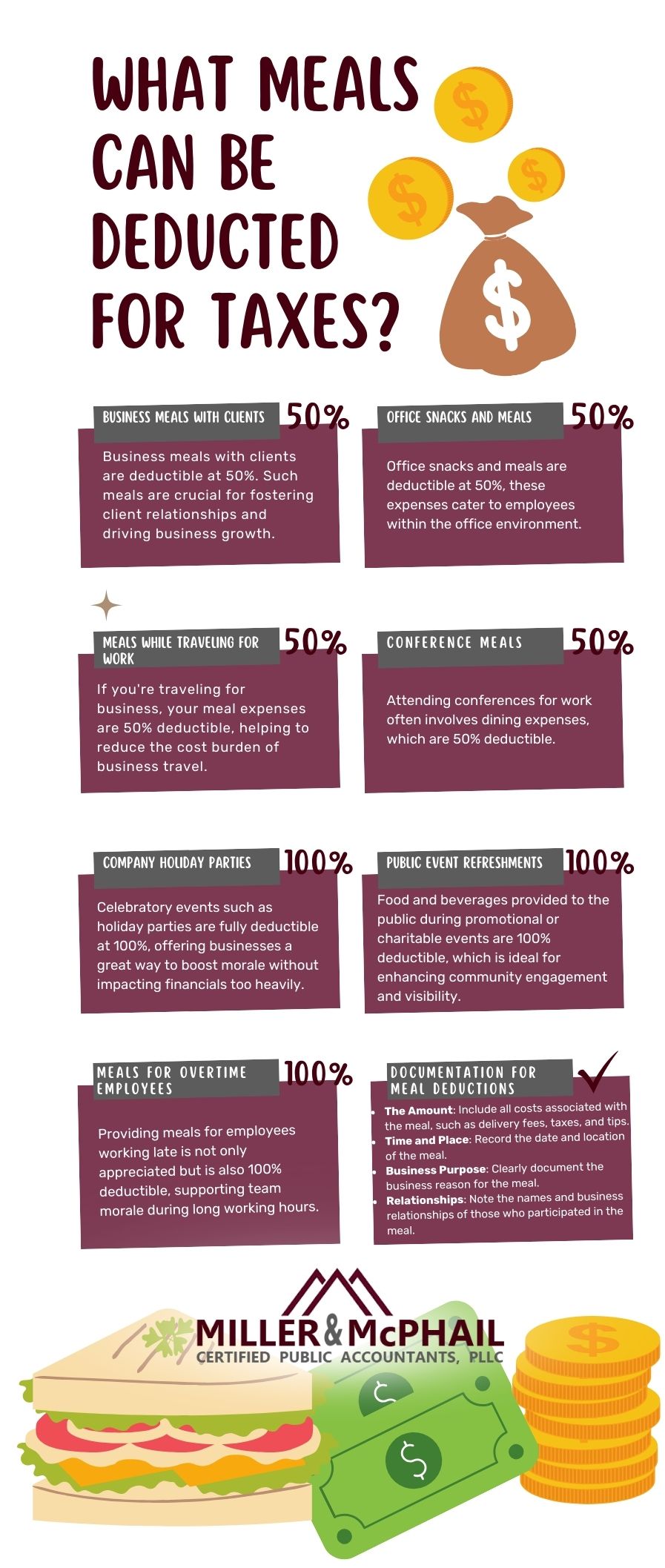December 16, 2024
Each year we work to provide you with our year-end planning letter in time to implement possible tax saving strategies before December 31st. As a result, it’s possible Congress could pass new legislation between your receipt of this letter and year-end. Congress has not acted concerning several expiring provisions and extenders, including those introduced by the Tax Cuts and Jobs Act. At this point, it is uncertain whether there will be new legislation after the election and before 2025. Therefore, please contact our firm if you would like an update on possible legislation and how it could affect you. HIGHLIGHTS OF PROVISIONS INCLUDED IN SECURE 2.0 ACT FIRST EFFECTIVE IN 2024 On December 29, 2022, President Biden signed the “Consolidated Appropriations Act, 2023.” In the following summary, we’ve listed a few provisions of the SECURE 2.0 segment of the Consolidated Appropriations Act, 2023, that could impact your 2024 year-end planning. Exceptions From 10% Penalty Tax For Certain “Early Distributions” From Retirement Accounts Exception From 10% Penalty Tax Relating To Federally Declared Disasters. With the recent hurricane disasters, etc., it’s important to note that individuals living in a Federally Declared Disaster may be able to withdraw up to $22,000 from their retirement plan (including an IRA), penalty-free, as a Qualified Disaster Recovery Distribution (QDRD). There is a 180-day window within which the amounts may be withdrawn penalty-free. Even though there is no penalty on the amount withdrawn, the amount withdrawn will generally be included in your income. Exception For Distributions To Domestic Abuse Victims. Distributions from an eligible retirement plan (generally qualified plans, other than defined benefit plans) to a domestic abuse victim will not be subject to the 10% penalty tax if such distributions do not exceed $10,000 during the one-year period ending on the date the distribution is made. A domestic abuse victim is an individual abused by a spouse or domestic partner in a manner that includes physical, psychological, sexual, emotional, or economic abuse, including efforts to control, humiliate, or intimidate the victim, or to undermine the victim’s ability to reason independently, including by means of abuse of the victim’s child or another family member living in the household. Note! Employers are not required to allow distributions from an employer-sponsored retirement plan because of domestic abuse. No 10% Penalty Tax On Certain Emergency Personal Expenses “Emergency Personal Expense Distribution.” Any distribution from a retirement plan, other than a defined benefit plan, to an individual to meet unforeseeable or immediate financial needs relating to necessary personal or family emergency expenses will not be hit with the 10% penalty tax. Only one distribution for emergency expenses is allowed per calendar year. Note! An employer is not required to include an “Emergency Personal Expense Distribution” provision in the employer’s retirement plan. Increase In Age For Required Minimum Distributions (RMDs) Required minimum distributions (RMDs) from IRAs and qualified plan accounts were generally required to begin no later than April 1st following the calendar year in which an individual reached age 72. Note! RMDs are now required after 73, for individuals who attain age 72 after 2022. The Act provides: For an individual born after 1950, RMDs are required to begin no later than April 1 following age 73, and For an individual born after 1959, RMDs are required no later than April 1 following age 75. Trustee-To-Trustee Tax-Free Transfer Allowed From 529 Plan To Beneficiary’s Roth IRA A trustee-to-trustee tax-free transfer is allowed after 2023 from a 529 plan to a beneficiary’s Roth IRA without tax or penalty if the following requirements are met: The 529 plan has been maintained for at least a 15-year period ending on the date of the transfer. The amount of transfer to the Roth IRA does not exceed the aggregate amount of contributions and earnings prior to the 5-year period ending on the date of transfer. Transfers for any one taxable year cannot exceed the IRA contribution limitation for the year reduced by the amount of all contributions made to all IRAs maintained for the beneficiary’s benefit during the year. The aggregate of all qualified transfers for the current and all prior years does not exceed $35,000. HIGHLIGHTS OF TRADITIONAL YEAR-END TAX PLANNING Each year, we discuss several traditional year-end tax planning strategies to help reduce taxable income. One of those strategies is reducing current year taxable income by deferring taxable income into later years and accelerating deductions into the current year. This strategy is beneficial when your income tax rate in the coming year is expected to be the same or lower than the current year. Consequently, in the following discussion, we include traditional year-end tax planning strategies that would allow you to accelerate your deductions into 2024 while deferring your income into 2025. Planning Alert! For individuals who expect their 2024 income tax rate to be much lower than their 2025 income tax rate, the opposite strategy might be more advantageous. For example, individuals who have a significant drop in income during 2024, may decide it’s better to accelerate income into 2024 (to be taxed at lower rates), while deferring deductions into 2025 (to be taken against income taxed at higher rates). Tax Benefits Of Above-The-Line Deductions. Traditional year-end planning includes accelerating deductible expenses into the current tax year. So-called “above-the-line” deductions reduce both your “adjusted gross income” and your “modified adjusted gross income,” while “itemized” deductions (i.e., below-the-line deductions) do not reduce adjusted gross income or modified adjusted gross income. Deductions that reduce your adjusted gross income (or modified adjusted gross income) can generate tax benefits for 2024, including increasing your other tax deductions, reducing the phase-out of your tax credits, and improving your eligibility for certain tax-advantaged benefits. The following is a discussion of planning for accelerating above-the-line deductions into 2024: Moving Expenses For Active-Duty Armed Forces Members. Generally, active members of the Armed Forces who move pursuant to a military order because of a permanent change of station may still deduct un-reimbursed qualified moving expenses as above-the-line deductions and may exclude the employer reimbursements of those moving expenses from income. For 2024, an Armed Forces Member may use the standard rate of 21 cents per mile to determine the deduction for automobile expenses related to a qualified move. Contributions To A Health Savings Account (HSA). You may be eligible for an above-the-line deduction for contributions to an HSA if you are covered under a high-deductible health plan during 2024. The maximum deduction for a self-only coverage plan is $4,150 and $8,300 for a family coverage plan. In addition, if you are at least 55 by the end of 2024, you can add $1,000 ($5,150 & $9,300). Student Loan Interest Deduction. The $2,500 maximum deduction is phased out between $165,000 and $195,000 of modified adjusted gross income for filing a joint return ($80,000 and $95,000 if filing single). Caution! The deduction is not allowed to: A taxpayer filing as married filing separately, or A taxpayer who may be claimed as a dependent on someone else’s tax return. Itemized Deductions Although itemized deductions (i.e., below-the-line deductions) do not reduce your adjusted gross income or modified adjusted gross income, they still may provide valuable tax savings if your itemized deductions exceed your standard deduction. For 2024, the Standard Deduction is: Joint Return - $29,200; Single - $14,600; and Head-of-Household - $21,900. The following are ideas for planning with itemized deductions: Medical Expense Deductions. For 2024, you are allowed to take an itemized deduction for medical expenses only to the extent your aggregate medical expenses exceed 7.5% of your AGI. Planning Alert! It may be possible to deduct expenses for your "medical dependent." If you paid medical expenses for a child, parent, etc., who you are unable to claim as a dependent due to their 2024 gross income, please call us so we can determine if these expenses qualify to be reported as medical expenses on your return. $10,000 Cap On State And Local Taxes. From 2018 through 2025, your aggregate itemized deduction for state and local real property taxes, state and local personal property taxes, and state and local income taxes (or sales taxes if elected) is limited to $10,000 ($5,000 for married individuals filing separately). Note! You are still allowed a full deduction for state, local, and foreign property or sales taxes paid or incurred in carrying on your trade or business (e.g., your Schedule C, Schedule E, or Schedule F operations). Limitations On The Deduction For Interest Paid On Home Mortgage “Acquisition Indebtedness.” The Tax Cuts And Jobs Act (TCJA) reduced the dollar cap for Acquisition Indebtedness incurred after December 15, 2017, from $1,000,000 to $750,000 ($375,000 for married filing separately) for 2018 through 2025. Generally, any Acquisition Indebtedness incurred on or before December 15, 2017, is “grandfathered” and will still qualify for the $1,000,000 cap. Planning Alert! If your monthly interest payments during early 2024 will likely exceed $750,000, prepay your January 2025 mortgage interest before December 31, 2024, so you can accelerate the interest deduction portion into 2024. Charitable Contributions. If you want a 2024 deduction for a charitable contribution, it must be “paid” by year-end. For example, if you mail a check to your favorite charity by December 31, 2024, it will be deductible in 2024. However, if you merely give a note or a pledge to a charity, no deduction is allowed until you pay the note or pledge. Planning Alert! If you are considering a significant 2024 contribution to a qualified charity, it will generally save you taxes if you contribute appreciated long-term capital gain property, rather than selling the property and contributing the cash proceeds to the charity. By contributing capital gain property held more than one year, a deduction is generally allowed for the full value of the property, but no tax is due on the appreciation. Casualty Losses. From 2018 through 2025, the itemized deduction for personal casualty losses and theft losses has been suspended. Note! Personal casualty losses generally continue to be deductible to the extent the taxpayer has personal casualty “gains” for the same year. In addition, casualty losses with respect to property held in a trade or business or for investment are still allowed. Planning Alert! Personal casualty losses attributable to a Federally declared disaster continue to be deductible. If you have a casualty or theft loss resulting from a federally declared disaster, you have the option of taking the loss in the tax year of the loss or the tax year prior to the loss. Postponing Taxable Income May Save Taxes. Generally, deferring taxable income from 2024 to 2025 may also reduce your income taxes if your effective income tax rate for 2025 will be lower than your effective income tax rate for 2024. Moreover, deferring income from 2024 to 2025 may provide you with the same tax benefits of accelerating deductions into 2024. Planning Alert! The deferral of income could cause your 2024 taxable income to fall below the thresholds for the highest 37% tax bracket (i.e., $731,201 for joint returns; $609,351 if single). If you have income subject to the 3.8% Net Investment Income Tax (3.8% NIIT) and the income deferral reduces your 2024 modified adjusted gross income below the thresholds for the 3.8% NIIT (i.e., $250,000 for married filing joint, $125,000 for married filing separate, and $200,000 for all others), you may avoid this additional 3.8% tax on your investment income. In addition, if you reduce your modified adjusted gross income below the NIIT thresholds above, you may not be subject to the additional Medicare tax of 0.9% on your wages and/or self-employment income. Planning Alert! If you are a self-employed individual using the cash method of accounting, consider delaying year-end billings to defer income until 2025. Remember, if you receive the check in 2024, deferring the deposit of the check until 2025 does not defer the income. Caution! You may not want to defer billing if you believe this will increase your risk of not getting paid. TAX PLANNING FOR INVESTMENT INCOME Planning With The 3.8% Net Investment Income Tax (3.8% NIIT). The 3.8% NIIT applies to the Net Investment Income of higher-income individuals. This tax applies to individuals with modified adjusted gross income (MAGI) exceeding $250,000 for married filing jointly; $200,000 if filing as single or head of household; or $125,000 for married filing separately. The 3.8% NIIT is imposed on the lesser of an individual’s net investment income or the amount by which the individual’s MAGI exceeds the thresholds above. Planning Alert! The NIIT applies to interest, dividends, annuities, royalties, rents, and income from passive activities. The 3.8% NIIT will not apply to your tax-exempt income, such as tax-exempt bond interest. Traditional Year-End Planning With Capital Gains And Dividends. For individuals filing a joint return with 2024 taxable income of less than $94,051 (less than $47,026 if single), their long-term capital gains and qualified dividends are taxed at a zero percent rate. The zero percent rate for long-term capital gains and qualified dividends is particularly important to lower-income retirees who rely largely on investment portfolios that generate dividends and long-term capital gains. Planning Alert! If you have substantial capital loss carryforwards coming into 2024, consider selling enough appreciated securities before the end of 2024 to decrease your net capital loss to $3,000. In most cases, you should sell the short-term gain (held 12 months or less) securities first. This allows your net capital loss (in excess of $3,000) to offset your short-term capital gain, while preserving favorable long-term capital gain treatment for later years. CONSIDER RECENT CHANGES TO IRAS AND QUALIFIED RETIREMENT PLANS Final RMD Regulations Keep 10-Year Rule When Account Owner Dies On Or After The Required Beginning For Taking Distributions. The 2024 final regulations do not modify the interpretation of the 10-year rule as provided in the proposed regulations. However, the final regulations do not require distributions that were not made in 2021, 2022, 2023, or 2024, pursuant to the relief provided in IRS Notices to be made in a catch-up distribution in 2025. Only the distribution that would otherwise have been required for 2025 will be required for 2025. However, any remaining balance remaining in the account owner’s account must be distributed to beneficiaries in that 10th year. SELECTED MISCELLANEOUS YEAR-END PLANNING CONSIDERATIONS Contributing The Maximum Amount To Your Traditional IRA. If you are married, even if your spouse has no earnings, you can generally deduct in the aggregate up to $14,000 ($16,000 if you are both at least age 50 by the end of the year) for contributions to you and your spouse’s traditional IRAs. You and your spouse must have combined earned income at least equal to the total contributions. However, no more than $7,000 ($8,000 if at least age 50) may be contributed to either your IRA account or your spouse’s IRA account for 2024. If you are an active participant in your employer’s retirement plan during 2024, your IRA deduction is reduced ratably as your adjusted gross income increases from $123,000 to $143,000 on a joint return ($77,000 to $87,000 on a single return). However, if you file a joint return with your spouse and your spouse is an active participant in his or her employer’s plan and you are not an active participant in a plan, your IRA deduction is reduced as the adjusted gross income on your joint return grows from $230,000 to $240,000. Caution! Every dollar you contribute to a deductible IRA reduces your allowable contribution to a nondeductible Roth IRA. Contributing The Maximum Amount To Your 401(k). Participants have until December 31st to contribute to their 401(k). For 2024, the maximum contribution amount is $23,000 ($30,500 if at least 50 years old). Contributions to your 401(k) will reduce your current taxable income and add to your retirement savings. The 20% 199A Deduction For Qualified Business Income. Don’t overlook the 20% Deduction under Section 199A with respect to “Qualified Business Income,” “Qualified REIT Dividends,” and “Publicly-Traded Partnership Income.” The 20% 199A deduction does not reduce your adjusted gross income or impact your calculation of self-employment tax. Instead, the deduction simply reduces your taxable income. The 20% 199A Deduction is allowed in addition to your itemized deductions or your standard deduction. Note! The 20% 199A Deduction is set to expire after 2025! Consider Paying Qualified Education Expenses Early To Increase Education Tax Credits. If you pay educational expenses for 2024, you may be able to take advantage of either the American Opportunity Tax Credit (AOTC) or the Lifetime Learning Credit. The $2,500 AOTC applies to qualified education expenses for the first four years of higher education for an eligible student. Energy Credits For Vehicles. If you purchased a new or used electric, hybrid, or fuel cell vehicle during 2024, you may qualify for a credit. For qualifying new personal use vehicles, the credit can be up to $7,500. For used vehicles, the credit can be up to $4,000. Unfortunately, determining if a vehicle qualifies for these credits is complicated. So, if you acquired an electric, hybrid, or fuel cell vehicle during 2024, please retain the documentation provided by the dealer so we can determine if you qualify for either of these credits. Note! You will not get an additional credit if you received the credit directly or indirectly from the dealer. Credits For Energy Efficient Home Improvements. If you installed energy-efficient insulation, doors, windows, skylights or energy-efficient heat pumps, air conditioners, furnaces, water heaters, or boilers in your residence during 2024, you may qualify for a credit of up to $3,200 if certain energy-efficient standards are met. Also, you may be eligible for a credit of 30% of the cost of solar panels, solar water heaters, geothermal heat pump property, and wind turbines installed in your residence during 2024. Gift And Estate Tax Planning. For 2024, a donor can gift $18,000 to each donee. It is not a taxable gift to the donor and gifts are not included in the recipient’s income. Each taxpayer’s amount of unified credit used against gift tax or estate tax is $13,610,000 for 2024. Planning Alert! Using the annual gift tax exclusion is an effective tool to move assets out of your estate without creating any gift tax or using any of a donor’s unified credit amount. Trust And Estate Distributions. If you are the trustee of certain trusts or executor of an estate, don’t forget that fiduciary entities may distribute the trust’s distributable net income within the first 65 days of 2025 and treat it as distributed in 2024. The tax is imposed at the trust level unless the income has been distributed to the beneficiary. To the extent the distribution is treated as paid to the beneficiary, the income is taxed at the beneficiary’s tax rate, which is generally lower than the tax rates that apply to most trusts. If your trust or estate is affected by this rule, please call our firm, and we can help you determine whether it would be tax-effective to distribute income before the election has been made. Adjusting Your Tax Withholding To Avoid Surprises. If you want to avoid an unexpected tax liability and possible penalties and interest in 2025, it’s a good idea to revisit your withholding and estimated tax payments before year-end. The IRS encourages taxpayers to use its Tax Withholding Estimator at https://www.irs.gov/individuals/tax-withholding-estimator to ensure they have the correct amount of taxes paid-in before December 31st. Planning Alert! It is especially important to review your withholding if you have had a job change, additional income stream, marriage, divorce, loss of dependent, or other significant event occur during 2024. If you believe your tax liability has been affected because of a significant event, please call our firm so we can discuss. FINAL COMMENTS Please contact us if you are interested in a tax topic that we did not discuss. Tax law is constantly changing due to new legislation, cases, regulations, and IRS rulings. Our Firm closely monitors these changes. In addition, please call us before implementing any planning ideas discussed in this letter, or if you need additional information. Note! The information contained in this material should not be relied upon without an independent, professional analysis of how any of the items discussed may apply to a specific situation. Disclaimer: Any tax advice contained in the body of this material was not intended or written to be used, and cannot be used, by the recipient for the purpose of promoting, marketing, or recommending to another party any transaction or matter addressed herein. The preceding information is intended as a general discussion of the subject addressed and is not intended as a formal tax opinion. The recipient should not rely on any information contained herein without performing his or her own research verifying the conclusions reached. The conclusions reached should not be relied upon without an independent, professional analysis of the facts and law applicable to the situation.




